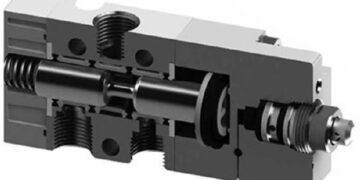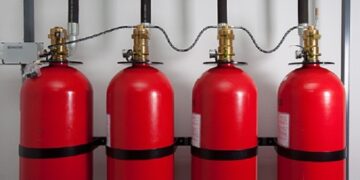In the world of mechanical engineering, standardized parts that ensure reliability and safety in the operation of mechanisms play an important role. One of these key components is the pin DIN 1471 – conical with a line . This standard defines the parameters and characteristics of the pin, which guarantees its effective use in various industries.
Contents
1. Introduction
2. History and origin of the standard
3. Characteristics and technical requirements
4. Application of the industry
5. Advantages and disadvantages
6. Examples of successful use
7. Future development and improvement
8. Conclusion
1. Introduction
Standardization of production and the use of regulatory elements in mechanical engineering play an important role in ensuring the quality and efficiency of mechanisms. One of the key standards defining the parameters of integral parts for mechanisms is the pin DIN 1471 conical with a line. This standard establishes not only the technical characteristics of the pin, but also defines its role in ensuring the reliability and stability of structures.
The DIN 1471 pin is defined by its conical shape and the presence of a line, which makes it a unique element among a number of standardized parts. In this article, we will consider in detail the history of the standard, its technical characteristics, application in various industries, as well as advantages and possible areas of improvement. We will consider examples of successful use and determine the development prospects of the DIN 1471 pin in the context of modern engineering requirements.
2. History and origin of the standard
The history of the DIN 1471 pin is inextricably linked with the evolution of the machine-building industry and the rapid development of production standardization in Europe. The DIN standard (Deutsches Institut für Normung – German Institute for Normalization) originated in Germany in the middle of the 20th century and became a key factor in the development and implementation of standards for the engineering industry.
The DIN 1471 pin first appeared in standards in the mid-1950s. At a time when the industry was developing rapidly, there was a need for normative elements providing a standardized approach to designs and production. The DIN 1471 pin was the answer to this need, providing a unified element that could be used in various industries and types of machines.
The peculiarity of the DIN 1471 pin in its conical shape and the presence of a line arose due to the requirements of specific usage scenarios. The conical shape ensures the accuracy of the fit and stability in the connection, and the dash makes it easier to install and remove the pin.
Over time, the DIN 1471 pin has undergone several updates and modifications to take into account changing technological requirements and production standards. Today, it remains a key standard in the world of mechanical engineering, ensuring reliability and stability in the design and production of mechanisms.
3. Characteristics and technical requirements
The DIN 1471 pin as a standardized element has clear characteristics and technical requirements that carefully define its shape, dimensions and properties. Let’s consider the main technical characteristics of this pin:
- Shape and dimensions:
- Conical shape: The pin DIN 1471 has a conical shape, which allows to ensure the accuracy of the fit and the effective connection of the elements.
- Diameter of the working part: The technical standard precisely defines the diameter of the working part of the pin, providing a standardized approach to production and installation.
- Length and stroke:
- Total length The standard establishes the minimum and maximum length of the pin, which determines its possibility of use in various designs.
- Risk: The presence of a risk on the surface of the pin makes installation and removal more efficient and convenient.
- Material:
- Type of material: Technical requirements determine the type of material from which the pin can be made. This may include various types of steel or other alloys, depending on the operating conditions.
- Accuracy and surface treatment:
- Accuracy: The standard establishes a permissible margin of error for the diameter and length of the pin to guarantee high accuracy and reliability.
- Surface treatment: Technical requirements should also take into account the surface treatment of the pin to prevent corrosion and ensure the strength of the material.
- Additional requirements:
- Marking: Marking on the pin is required to identify its characteristics and compliance with the DIN 1471 standard.
The characteristics and technical requirements of the DIN 1471 pin are key elements that ensure not only production standardization, but also reliability and stability in the use of this standard element in various mechanisms and designs.
4. Application of the industry
Due to its unique characteristics and high technical requirements, the DIN 1471 pin is widely used in various industries. Its conical shape and the presence of rice make it an ideal element for various designs and mechanisms. Let’s consider the main areas of application of the DIN 1471 pin:
- Mechanical engineering:
- Use in the connections of mechanisms and nodes, where precise connection and reliable fixation are required.
- Implementation in important parts of mechanisms where high resistance to large loads is required.
- Automobile industry:
- Use in connections of parts of the engine and transmission, where high strength and resistance to vibrations are required.
- Application in suspension systems to ensure precise strength and stability.
- Electrical engineering:
- Use in the construction of electric motors and generators for fixing parts and reliable operation of mechanisms.
- Application in the production of electrical equipment for installation and fixation of parts.
- Aerospace industry:
- Use in aircraft and spacecraft designs to ensure accurate fixation and stability at large temperature changes and vibrations.
- Metallurgy and mining industry:
- Use of equipment for connecting working elements and fixing parts of the equipment.
- Application in structures to reduce the impact of heavy loads and friction.
- Food industry:
- Use in equipment to connect parts of equipment that require resistance to moisture and high temperatures.
- Application in transportation and product processing systems.
Due to its versatility and reliability, the DIN 1471 pin is an integral component in various industries, ensuring the stability and efficiency of various technical systems.
5. Advantages and disadvantages
The DIN 1471 pin as a standardized element has its own properties that provide a number of advantages, but it also has certain limitations. Let’s consider the main advantages and disadvantages of this conical pin:
Advantages:
- Standardization and compatibility:
- The DIN 1471 pin corresponds to clear standards, which makes it easier to select and replace elements in production.
- Connection accuracy:
- The conical shape of the pin provides precise support, which is important when creating strong and reliable connections.
- Ease of assembly and disassembly:
- The presence of strokes contributes to the ease of installation and removal of the pin, which facilitates the maintenance and repair of mechanisms.
- High strength:
- The use of high-strength materials allows the pin to withstand significant mechanical loads.
- Various applied:
- A wide spectrum is used in various fields of industry, including mechanical engineering, automotive industry, electrical engineering, and others.
Disadvantages:
- Restrictions in the choice of materials:
- Depending on the standard, the pins can be made from a limited set of materials, which can cause in cases of high requirements for chemical resistance or special operating conditions.
- Potential wear in point contacts:
- In some conditions of use, especially under heavy loads, wear may occur in the point contacts of the conical shape, which may affect the service life.
- Suitability to high temperatures:
- Depending on the material chosen for production, the pin may lose its characteristics at high or low temperatures.
- Specific conditions of use:
- To achieve optimal results, it is important to consider specific conditions of use, such as environment, temperature, load, etc.
Despite these limitations, the DIN 1471 pin remains a reliable and widely used element capable of meeting many production challenges and providing stability and reliability in various industries.
6. Examples of successful use
Due to its high technical characteristics and unique design, the DIN 1471 pin is successfully used in various industries. Let’s look at some examples where this standard element has shown its effectiveness:
- Mechanical engineering:
- Connections of reducers: Pin DIN 1471 is used for precise connections in reduction mechanisms, where stability and accuracy of connection are important for optimal operation of the mechanism.
- Automobile industry:
- Fastening of engine parts The pin is inserted into the joints of the key parts of the engine, ensuring the stability and efficiency of the car mechanism.
- Electrical engineering:
- Connection of electric motor parts: In the production of electric motors, the DIN 1471 pin is used to fix various parts, which allows to achieve high reliability and durability in operation.
- Aerospace industry:
- Stability of connections: In aircraft and spacecraft designs, the DIN 1471 pin is used for stable connections, which allows for high reliability and safety.
- Metallurgy and mining industry:
- Fixation of equipment: In difficult working conditions, for example in mines or metallurgical plants, the pin DIN 1471 is used to fix parts of equipment, which increases its stability.
- Food industry:
- Ensuring hygienic standards: In the production of food products, the DIN 1471 pin is used in transportation and processing systems to ensure reliable fixation and compliance with high hygiene standards.
These examples demonstrate the wide range of applications and success of the DIN 1471 pin in various industries. Its reliability and standard parameters allow manufacturers to achieve high efficiency and quality in their products.
7. Future development and improvement
Pin DIN 1471, as a standardized element in the machine-building industry, is always subject to the process of improvement in order to meet increasing requirements and technological changes. Let’s consider the main directions of future development and the possibility of improving the pin DIN 1471:
- Materials and finishing:
- Development of new materials with high mechanical properties and resistance to aggressive environments to improve durability and reduce wear.
- Accuracy and standardization:
- Improvement of manufacturing and quality control processes to ensure higher accuracy and standardization of pin parameters.
- Production technologies:
- Using the latest production technologies, such as additive technologies or processing technologies, to improve quality and reduce production costs.
- Adaptation to new industry requirements:
- Taking into account the specific requirements of developing industries, such as renewable energy, medical technology or others, and adapting the pin for optimal use in these areas.
- Ergonomics and design:
- Development of new forms and designs of the pin to facilitate assembly and disassembly, ease of maintenance and increase efficiency.
- Environmental friendliness and responsibility:
- Implementation of efforts to reduce the environmental impact of the production and use of the pin, taking into account the requirements for sustainability and renewable resources.
- Integration with other technologies:
- Investigating the possibilities of integrating the DIN 1471 pin with other innovative technologies, such as the Internet of Things (IoT) or smart materials, to increase functionality and efficiency.
The upcoming development of the DIN 1471 pin is due to the rapid growth of technological capabilities and constant changes in the requirements of the industry. Emphasis on the improvement of materials, technologies and ecological aspects will contribute to the preservation of its popularity and successful application in a wide range of production spheres.
8. Conclusion
The DIN 1471 pin is a key element in the world of mechanical engineering and industrial production, thanks to its conical shape and lines, which ensure accuracy and ease of assembly and disassembly. Having first appeared in the middle of the 20th century as part of the DIN standards, this pin has become an integral part of the design and production of various technical systems.
A wide range of applications, from mechanical engineering and the automotive industry to aerospace and food production, testifies to its versatility and effectiveness in various operating conditions. The DIN 1471 standard ensures stability and reliability of connections, which makes it an integral part of the industrial landscape.
The process of improving the DIN 1471 pin does not stop. Future development and innovations are aimed at improving materials, accuracy and taking into account the specific requirements of various industries. Preservation of ecological standards and integration with modern production technologies determine the direction of further improvement.
All this confirms that the DIN 1471 pin remains the most important component in the world of production, helping to ensure quality, reliability and efficiency in various industries.
































